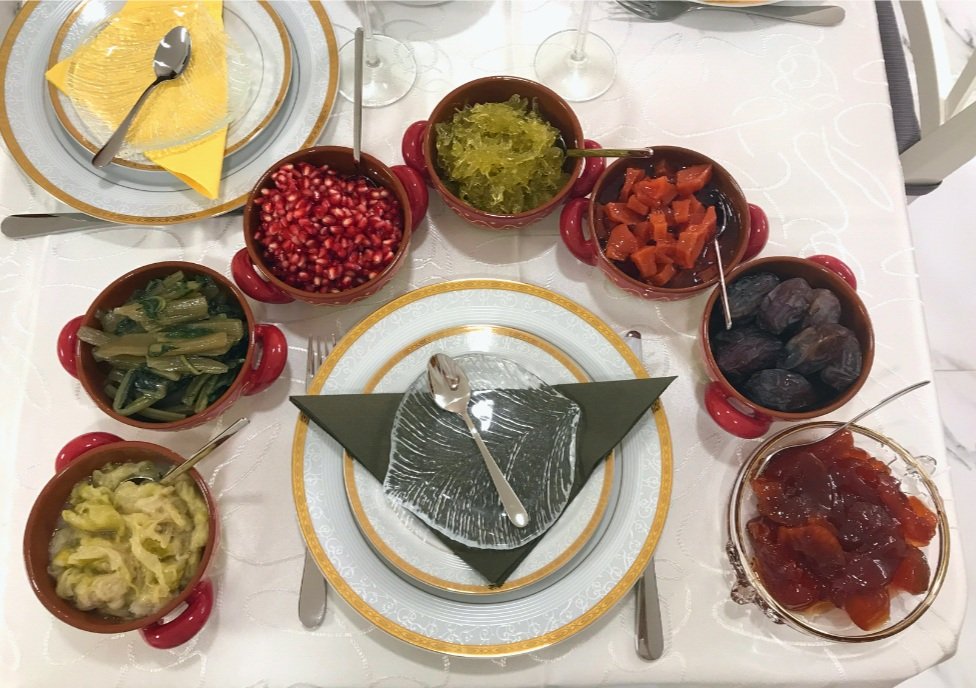Beets (Salka)
Similar to the reason why we eat leeks on Rosh Hashanah, beets (we use the greens of the beet) represent our wish to remove any of our enemies from our path. Selek in Hebrew resembles lehistalek or the way to say “removal”.
Pumpkin or Bottle Gourd (Ka’ra)
“Ka’ra” stands for bottle gourd in Moroccan, and in Hebrew, The word “Ka’ra” also means “to tear up”. As part of the blessing plate, it symbolizes tearing away your bad deeds (because all of us wish to be remembered by the good).
This dish we often make for Rosh Hashanah is “Angel Hairs” (a name Ron’s grandmother calls it). It’s a sweet jam made by grating the meat of the gourd into strands (which look like angel hair), and cooking it down until it becomes rich, marmalade-y sweet goodness. As an alternative to bottle gourd, some use pumpkin.
Sesame Seeds & Sugar (Rubia)
Rubia is the name we call any type of small bean (most commonly black-eyed peas or long beans), it’s similar to the word yirbu, "to increase." The beans symbolize our hopes for a prosperous year ahead filled with good deeds.
For a similar reason, in Morocco, it’s very common to whip together a mixture of sesame seeds and sugar. Seeds are the symbols of our good deeds, and sugar is a wish for a prosperous and sweet year ahead.
Quince
Quince, a fruit related to apples and pears, is commonly found on Jewish tables. We prefer cooking down the fruit into a luscious, sticky jam to serve at our Rosh Hashanah meal. You can slather the jammy goodness on a fresh piece of challah for a perfectly sweet bite.




